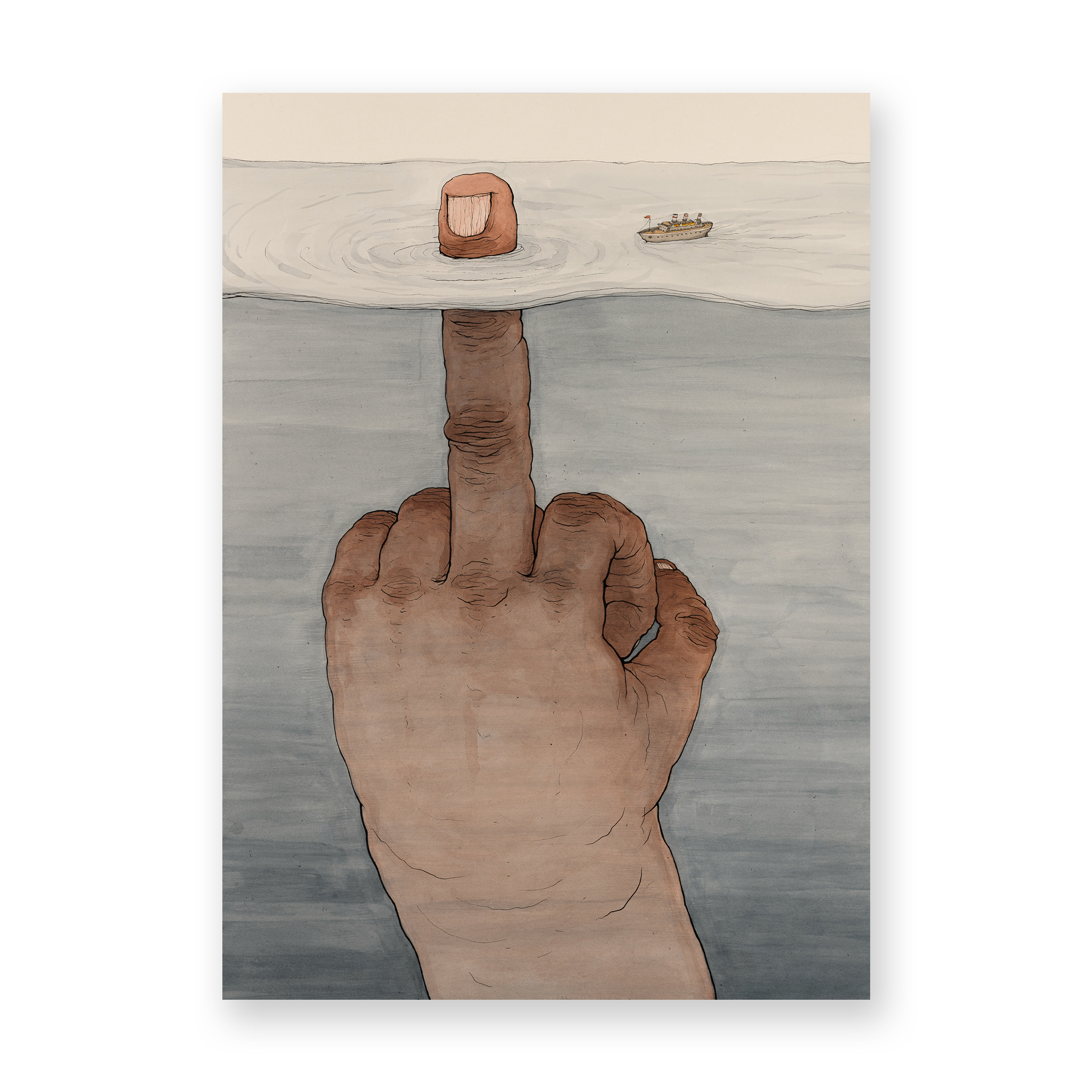ICEBERG
Description
NEMO’S – Iceberg
Acrylic and ink on paper on cardboard panel
50 x 70 cm, 2022
Frame included
Artist info
Nemo's
More info
Through his recognizable aesthetic language, once again Nemo’s offers us a reading of our time that dwells on its contradictions, in a balance between wonder and repulsion.
The artist develops a new story through the allegorical image of the Hands (Mani), a ductile tool capable of translating into shapes the emotions and discords of our time, making tangible his intimate vision of contemporary society.
The element of the Hand has always fascinated Nemo’s, starting from its morphological nature, and therefore from its natural ability of movement and transformation, becoming the protagonist of infinite and always different actions and interactions, reaching its most deeply rooted function of prolonging the expressive capacities of the intellect.
The Hand is viewed as a synthesis of the human being, as a physical translation of our creative potential, but also of our inconsistencies as an evolved species.
Secure payments
Pay in monthly installments
We ship all over the world
SUPPORT ON PURCHASES
MORE Nemo's
Go to artist page-
 Sale!
Sale!
Buy now135,00€120,00€ -

35,00€
Add to cart -

-

400,00€
Buy now -

35,00€
Add to cart




























